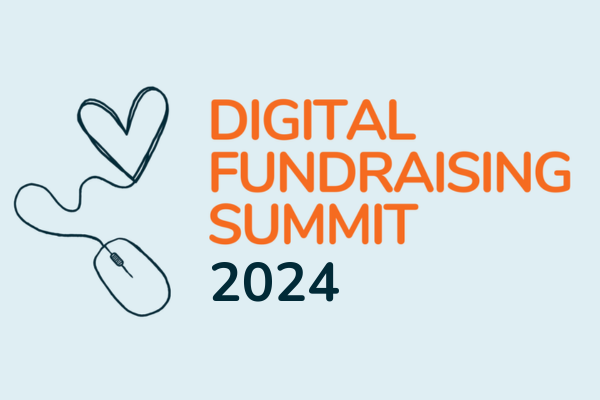Insights
INSIGHTS
All Topics
Virtual fundraising – is it dead?
25 Oct 2024by Victoria Read
We explore how virtual fundraising has changed and whether or not it is worth investing in social media fundraising tools in 2024 and beyond (spoiler: it is)
There was a time when it felt as though Facebook was the only social platform anyone used. Then followed Facebook Fundraising, a new tool for charities to raise donations and engage donors where they already were, and the sector thought we’d struck digital gold.
In 2024, it may well feel as though that time has passed. While the pandemic may have led to a Facebook Fundraising boom as more people connected online, the world has since reopened meaning that social media fundraising is no longer seen as the lifeline it was in 2020.
Well, hold onto your smartphones. Gold is still there; it’s just not all on Facebook.
The Facebook phenomenon: a mixed bag
Let’s talk numbers. Facebook boasts more than 3.06 billion users across the world. Since 2013, it has facilitated $8 billion (£6.1 billion) in donations. Impressive, right?
But here’s the kicker – with such a massive user base, shouldn’t that number be bigger?
Even before the launch of Facebook Fundraising tools in 2013, Facebook was an impressive acquisition channel for organisations. Facebook opened up new possibilities to the earlier generation of social marketers, becoming a channel where fundraisers could share their web-based fundraising pages to their network and receive between 40-60% of sponsored donations to their chosen charity.
While Facebook’s fundraising tools clearly get results, they’re limited to Facebook-only networks. The model requires that charities keep feeding the machine by continuing to spend money on their Facebook ads so they can acquire new users, because they never get to design the supporter experience or access the data needed to drive their audience growth. That’s great for Meta, but is it the best, or even only, option for the sector?
The social media smorgasbord
Facebook users in the UK are spending 25% less time on the platform than in 2018. But before you start penning Facebook’s eulogy, remember – people aren’t abandoning Facebook – they’re diversifying. On average, folks are active on seven and a half platforms. Your potential donors are flitting between Instagram, TikTok, and probably three other sites you haven’t even heard of yet.
So, what’s a savvy charity to do? Think audience-first and use a multi-channel approach. Different platforms attract different demographics. Running a virtual challenge for millennial women? You might find them on Instagram rather than Facebook. Remember, one size certainly doesn’t fit all. Make sure to tailor your journeys to the channel and audience in question.
Bringing it back home
While social media platforms are great for reach, the real magic happens when you bring supporters back to your own fundraising website. On your turf, with your brand, you’re in control. This is where tools like Funraisin can really help. It puts your charity front and centre, giving you complete control over your branding, data, and supporter experience.
You get the reach of social media by personalising your own digital space. Supporters have control over their own fundraising page, their story, and how they want to share it on their terms. And they can do so across multiple channels, not just Facebook, opening up more valuable networks to boost their fundraising efforts.
Top tips for social media fundraising success
As online fundraising experts, Funraisin has plenty of tools and tips to help charities reach their full potential when raising money virtually. Here, we share eight of their core fundraising principles to help charities overcome their biggest challenges.
1. Think mobile-first: 81.8% of acquisition and sponsored donations come through mobile devices. Don’t lose four out of five potential supporters and donors!
2. Encourage self-donation: Participants who self-donate to their fundraisers raise 3 times more on average.
3. Set fundraising targets: Funraisin’s target defaults activate 19% more fundraising pages (meaning that 19% more fundraising pages receive at least one donation or more). People need goals!
4. Embrace SMS: Integrated SMS journeys can get 72% response rates. Text still cuts through the noise.
5. Donation Nudges: Showing donors the difference they could make to a fundraiser’s total is likely to increase donations. Funraisin’s donation nudges increase page value by 20% by emphasising potential donor impact.
6. Smart donation service values: Increase average donations by 22% with audience-based donation defaults, such as presenting pre-populated optimal or higher donation values on the fundraising page based on the audience. Tell them exactly how that donation amount can help support your organisation’s mission.
7. Cross-platform synergy: Funraisin allows simultaneous creation of its pages and Facebook fundraisers, boosting page value over 22% when they do.
8. Measure everything: If you can’t measure it, you can’t manage it. Use Funraisin’s analytics to track all channels.
The bottom line
Virtual fundraising isn’t dead; it’s evolving fast. The charities that will thrive are those that embrace multi-channel approaches, prioritise audience experience, and aren’t afraid to innovate. Platforms like Funraisin lead this charge, by offering tools for branded, personalised fundraising across channels. By putting your brand and supporter experience first, you’re building lasting relationships.
So, go forth and fundraise! In the wild world of social media, be where your supporters are, with a resonating message and a donation process smoother than a freshly waxed sports car. Happy fundraising!
Victoria Read
More on this topic
Recommended Products
Our Events
Charity Digital Academy
Our courses aim, in just three hours, to enhance soft skills and hard skills, boost your knowledge of finance and artificial intelligence, and supercharge your digital capabilities. Check out some of the incredible options by clicking here.




















